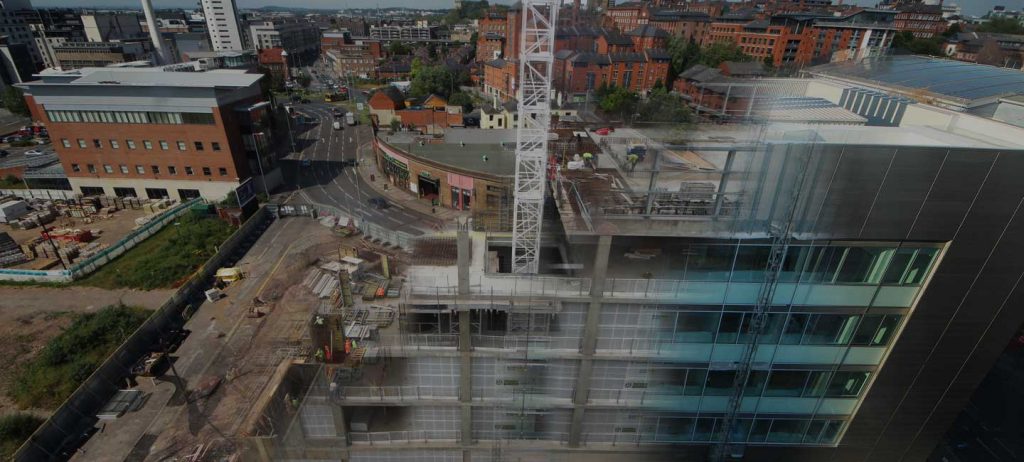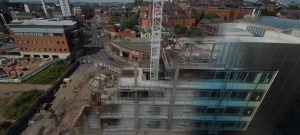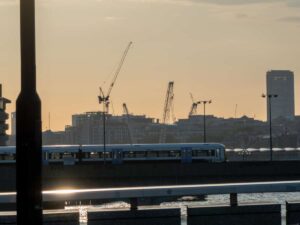Timelapse Photography – An Overview
Lets talk about timelapse photography and what exactly is that? Firstly, what is it used for?
Really, the best use of timelapse is to show, in a relatively short space of time, something that in fact took a much longer amount of time to capture. This is why classic subjects of time lapse photography include things like:
- Nature — Plants and flowers growing.
- Biology — Studying the effects of conditions and stimuli on a subject and also decomposition of matter.
- Landscape — Climate, weather and celestial changes.
- Construction — Showing the evolution of a structure as it is built or demolished.
- Urban — Like landscape, this can show how urban spaces are used over a period of time.
But Why Use Timelapse Photography?
As people we seem to have a fascination with the miniaturisation and ‘gigantification’, or speeding up and slowing down of things. We seem to be drawn to the spectacle of representing something on a scale so unfamiliar or unexpected that it, in a way, delights us.
Anyone that watches YouTube channels like The SloMo Guys know how interesting the world can be when you record at incredibly high frame rates and play back that slowed down footage; solids can appear to behave like liquid and phenomena unseen by the naked eye can be observed and studied.
At the other end of this scale, we have timelapse. While high speed photography (slo-mo) involves recording images at frame rates often in the thousands or even tens-of-thousands of frames per second, time lapse goes the other way: with projects sometimes spanning a number of years, it can easily be the case that only a few frames are captured per day, for the eventual video production.
Rather than just focusing a large timespan into a short amount of screen time as an exercise, we can use time lapse photography as a tool to win more contracts, document a change or to market your job as sustainable/innovative/cost saving etc.
How Can I get the Best Use of Timelapse Photography?
Without getting too technical, there is a calculation that can be done to arrive at the interval between timelapse photographs as required.
There are a few parameters you need to know, depending on what you are trying to calculate:
- The frame rate that the finished timelapse video will be played at (for example 24 frames per second is widely used for cinema projection, something closer to 30fps is often used for television broadcast in North America while 25fps is the standard across most of Europe).
- The intended length of your timelapse video (this is how long you want the timelapse to be shown on screen; do you need to show your footage in 10 seconds or over a minute?)
- The duration of the activity being time lapsed (this might be ice melting over a few hours, a flower blooming over 3 days or a building being constructed over 2 years).
As an example let’s say we are making a documentary on business & finance, and have a timelapse camera recording a busy urban crossroads, with the intention to show the pattern of how road traffic and pedestrians flow switches and alternates during work hours.
Based on a video playback speed of 25 frames per second (partly because it is easier to calculate and partly because that is a common frame rate in European regions) and an intended video length of 60 seconds, you can figure out the number of frames needed to complete the capture. Knowing the duration of the activity that is being time lapsed means you can then calculate the interval required between each shot:
25fps x 60s = 1,500 frames (‘photographs’) required to populate the timeline.
By recording from 08:00 to 18:00 (10 hours = 600 minutes = 36,000 seconds) we get:
36,000 seconds /1,500 frames = 24 second interval.
In filmmaking there is a particular mantra: show, don’t tell. It serves as shorthand for the storytelling value in showing your audience something, rather than using often clunky, shoe-horned in expositional dialog. By letting the images speak for themselves, the target audience can fill in the gaps and complete the message on their own, rather than be spoon-fed the story beats.
A very similar concept can be applied to using time lapse photography as a tool and playing to its advantages.
Application of Timelapse Cameras on Construction Sites
Let’s now give an example that reflects our real-world experience:
Imagine you are part of a construction management team who are about to set up a site compound for a new leisure facility to be built. The cabins are on their way and online inductions are being completed by your supply chain partners. But there is also a requirement by the local authority and shareholders to show off their shiny new sports and leisure centre.
The good news is, you have been given a budget to use in order to help showcase the project and even better news; you made the decision to use some of it to hire timelapse cameras on site. Clever you.
We often see that ultimately our timelapse footage will be shown alongside either written copy, embedded on a website, or perhaps as part of a feature aired on regional news programmes, as well as being used internally to chart progress. The video itself serves as a standalone tool that shows, say, in sixty seconds how your site went from a reclaimed muddy field to a proud structure of steel brick and glass over a period of two years! Visually representing this large scale change in a short space of time is a really good way of communicating the effort put in and the impact that work has had, all without a single word being said.
Using our calculations from earlier and some context, we can do a basic calculation of what we need:
Video requirement:
25fps x 50s (on screen for 50 seconds) = 1,250 frames needed.
Shooting interval:
(1 year =) 8,766 hours / 1,250 frames = C. 7 hours interval
This however, is not the end of it when calculating the time lapse for this job. We need to take into account the actual working hours of your site; the calculation above assumes a worksite operating 24 hours a day 7 days a week for the whole year. It is more realistic that a construction site runs 07:00 – 18:00 Monday – Saturday, for argument’s sake. There is also the consideration of weather, either obscuring the view or effecting the programme on site. Consider too, key activities that are important to show. These can be things like the first steel beams/topping out, a key lifting operation, concrete pours etc. All of these are reasons why we tend to err on the side of a slightly higher shooting interval, resulting in more images taken but this also allows us to lose some footage due to bad weather, downtime on site etc. whilst still having enough media to fill our (in this case, 50 second) time line.
Infact we can reduce the shooting interval on our remote static time lapse systems down to every 5 minutes if necessary. The key thing is communicating what the needs are from your timelapse footage so that we can tailor your shooting schedule to suit.
Good, clear communication is obviously also important when discussing where to position the time lapse cameras. There are three things that are primary concerns here:
- Can the camera be left long enough for uninterrupted media capture? (Timelapse is most effective when you maintain the same viewpoint for the duration of the action. Moving the camera’s angle or position can cause disjointed, incoherent footage when it is ‘sped up’ to the rate needed to view the video).
- What are the mounting options? (Do we mount on site cabins? The roof of a building across the street? A free standing column?)
- How will the camera be powered? (On site permanent power gives the most reliable feed, but there are also options to run off of temporary site genies or from solar/battery combinations).
Is it Worth it?
Yep.
We think so.
If there is a requirement to document the evolution of a construction or demolition site over a relatively long span of time, timelapse photography is the tool to use. There are off-the-shelf cameras, time lapse specialists (like us), sometimes keen individuals in your management team might be equipped to do your time lapse recording.
Whichever avenue you take, remember to think about how often you need to take an image, how you can safely secure, power and maintain the timelapse system and how it will be presented to your audience.
We have installed and managed timelapse systems and produced videos that cover a range of different needs and purposes, including some of the ones mentioned in this article. If you have time, watch some of the shortened versions here to see what the flip I have been on about;
In this video we will show you:
• “Lincoln Blue” Tri-services headquarters construction, Lincoln:
21 months of capture shown in approximately 11 seconds.
• LSC1/54 Rugby Road Bridge renewal, Royal Leamington Spa:
Approximately 56 hours shown in 9 seconds (from 2 camera angles.
• A533 Bridge Deck Move, M56 at Runcorn:
Approximately 27 hours of capture shown in 9 seconds.
• BioCity construction, Nottingham:
25 months of construction shown in 17 seconds.
Why Inside Out Group
We offer specialised time-lapse filming and photography services for construction projects in the UK. Our in-house team is fully CSCS accredited. As a company, we hold Construction Line Gold, RISQS Audited and Verified, Builders Profile Premium, and ISO9001 accreditations, ensuring high-quality and professional work every time. Learn more about how we support the construction industry here.



